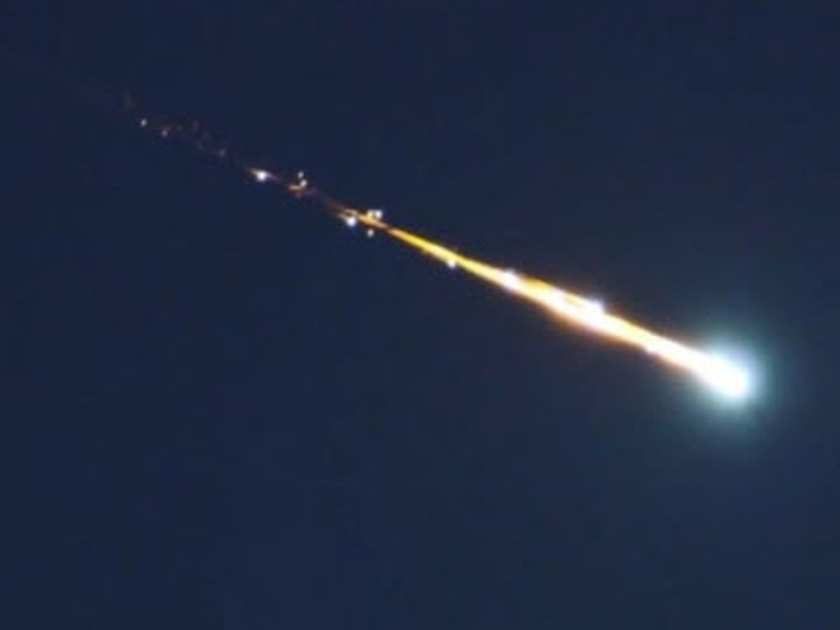
A NASA image of a fireball.
For the second time in two weeks, a large fireball was seen streaking across the sky in B.C., and astronomers say it's the best time of the year to see large, bright meteors.
"The springtime is considered fireball season; we actually call it that," said Derek Kief, an astronomer at the H. R. MacMillan Space Centre. "In the early spring, people tend to see more fireballs than at any other time of the year. They're random and inconsistent and once a month you'll get a very good one."
At least five people, including two in British Columbia, considered the fireball they saw on Thursday around 10 p.m. remarkable enough that they reported it to the American Meteor Society's "report a fireball" website, where it was deemed an "event."
They reported the bright sparking ball of fire flared for one to two seconds.
"Remarkable sight!" Kim D. on Mayne Island wrote on the site. "Saw sparks."
"Not sure exactly what I saw but it appeared as a ball with a flame or something. It was pretty fast," Sheri C. from Blaine, Wash., wrote. "I was facing Peace Portal in my vehicle ...
and it appeared to hit the ground somewhere. It was quite exciting!""Blue sparks shooting downward off the fireball three times during the descent," wrote Beau M. of Snohomish, Wash. "Brilliant green streak, widening into several streaks and terminating in a bright hot red," said Richard M. of Mount Vernon.
The sightings came two weeks after a fireball blazed across the sky on March 16 at 9:40 p.m. and was caught on a car dash camera. Seven eyewitnesses from B.C. and 64 from Washington reported it on the AMS website.
"It's a rare thing for a person to see a fireball," said AMS astronomer Mike Hankey in Baltimore. "They only last for a second or two and to randomly catch it is a once-in-a-lifetime experience."
There is a spike of fireballs reported to the website in February and early March, second in frequency only to October through December, a time when there are several meteor showers and more are expected, he said.
A meteor is the "light emitted from a meteoroid or (larger) asteroid as it enters the atmosphere," according to the AMS. And a fireball is a meteor that's brighter than normal.
"It reaches tremendous temperatures and it has pockets of air that heat up and expand and that causes the entire rock to explode in what's called an air blast" that can cause a sound, said Kief.
Few meteors survive as meteorites because they usually have disintegrated into grains and dust by the time they reach ground. But Hankey said he has tracked down fragments based on eyewitness accounts 10 times since 2012, and some weighed as much as a kilogram.
He said it's common for people who see fireballs to think they've landed in a neighbour's yard, but a fireball is first seen when it's 80 kilometres away and travels about 40 km toward Earth before it explodes.
"If it were in your neighbour's yard, you would see it above you," he said. "The lower they are on the horizon, the farther away they are from you."
Kief said there are likely more fireball sightings in spring because more people may still be up and about to see them when the evenings are darker as compared to during summer.
Experienced observers can expect to see one fireball that's half as bright as a full moon or brighter for every 200 hours of observing, and one that's about as bright as Venus every 20 hours or so, according to the AMS.
Kief, who said he's only seen one fireball at a distance, said you can increase your odds of seeing a fireball, if when "you are walking around outside, look up, always look up."
Reader Comments
to our Newsletter